
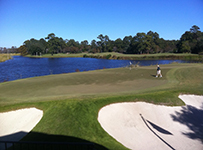
|
||||||||||||

|
||||||||||||
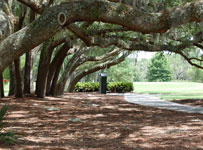
|
||||||||||||

|
||||||||||||
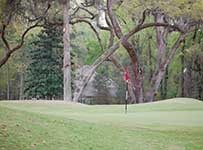
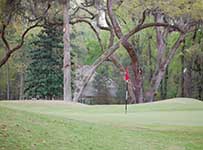
Manatee County
|
||||||||||||||||||||||||||||||||||||||||||||||||||||||||||||||||||||||||||||||||||||||||||||||||||||||||||||||||||||||||||||||||||||||||||||||
| 2008 | McCain | 53% | Obama | 46% |
| 2012 | Romney | 56% | Obama | 43% |
| 2008 | McCain | 50% | Obama | 50% |
| 2012 | Romney | 53% | Obama | 46% |
| 2008 | McCain | 57% | Obama | 42% |
| 2012 | Romney | 61% | Obama | 39% |
| 2008 | McCain | 43% | Obama | 57% |
| 2012 | Romney | 44% | Obama | 56% |
| 2008 | McCain | 73% | Obama | 26% |
| 2012 | Romney | 76% | Obama | 22% |
| 2008 | McCain | 54% | Obama | 45% |
| 2012 | Romney | 53% | Obama | 46% |
| 2008 | McCain | 35% | Obama | 64% |
| 2012 | Romney | 33% | Obama | 66% |
| 2008 | McCain | 55% | Obama | 44% |
| 2012 | Romney | 58% | Obama | 41% |
| 2008 | McCain | 59% | Obama | 41% |
| 2012 | Romney | 61% | Obama | 39% |
| 2008 | McCain | 50% | Obama | 49% |
| 2012 | Romney | 52% | Obama | 47% |
| 2008 | McCain | 43% | Obama | 57% |
| 2012 | Romney | 43% | Obama | 56% |
| 2008 | McCain | 40% | Obama | 59% |
| 2012 | Romney | 43% | Obama | 55% |
In this particular Presidential election, you might think that many relocated Yankees and native Southerners in Deep South golf communities are at each other’s throats as we approach November 8. After all, the results of the election in many northern states are as pre-ordained one way as they are in, say, Alabama the other way. But after interviews with residents, real estate brokers and developers over recent weeks, it turns out that coping mechanisms are alive and well across the entire political spectrum in southern golf communities. Verbal combat between donkeys and elephants is as rare as golfing eagles.
Let’s be clear up front: If you are searching for a golf community home and want to know whether a particular community is Republican or Democrat, don’t ask your real estate agents. They are not permitted to share such information.
“No customer has asked me questions regarding [political affiliations],” says Mike Wyka, a Columbia, SC, real estate agent and resident of Woodcreek Farms golf community. “And I am not permitted to steer anyone to one location or another.” (The term “steering” goes back to the days when some real estate agents navigated couples of color away from white neighborhoods. Today, an agent isn’t permitted to answer any questions about demographics, such as “How many children live in the neighborhood” or “How many retired couples live here.”) The best you can do to determine political leanings is to check election results by county and town, freely available on the Internet (and some posted in the accompanying sidebar from the 2008 and 2012 Presidential elections).
But, in many cases, especially in the conservative South, those county results may be disconnected from votes inside a local golf community.
“Residential communities filled with those who have relocated do not tend to reflect the surrounding politics,” says Ken Kirkman, who developed the New Bern, NC, golf community of Carolina Colours after successful stints at Landfall (Wilmington) and Bald Head Island. “At Carolina Colours, I see more red than blue, but it is not an overwhelming preponderance.”
Registered Republicans in New Bern itself comprise 57.7% of the electorate, with Democrats at 41.6%. Presidential voting in New Bern the last two cycles reflected that composition, but in 2008, the state of North Carolina gave President Obama a narrow electoral victory over John McCain, the first time the state had gone blue since 1976 (Jimmy Carter). Mitt Romney beat the President by a couple of percentage points statewide in 2012. Yet, as of this writing, Hillary Clinton was leading Donald Trump in most North Carolina state polls.
Sometimes declaring a political point of view in a golf community can cause shock and awe. I learned this during a July 2008 barbecue with neighbors in Pawleys Plantation in Pawleys Island, SC, where my wife Connie and I own a condo. I thought I’d have a little fun with my conservative neighbors during that heated summer of Presidential politics, and I said something like, “What’s wrong with a universal healthcare system?” There was nothing funny about their reaction, and I have not tried to provoke political discussions since then.
One of my customers has learned to navigate community politics more deftly than I in the two years he has lived on Daniel Island, 15 minutes from Charleston, SC. He moved there from Florida with his wife and children. (He prefers to remain anonymous.)
“In our Florida golf community,” he told me, “I declared myself a Democrat to a member of my golf group. He was shocked beyond belief.”
The couple was active in political campaigns in Florida and involved in the governance of their golf club, but they made the decision to adopt a lower profile after their move to South Carolina. They have turned their efforts more toward community projects, such as their children’s schools, the girl scouts and a local food bank.
“It is impossible to avoid political discussions in the locker room and men's grill,” my customer says. “But how one chooses to participate in those discussions can help to avoid lots of strife. [My fellow members] have not tried to make me feel uncomfortable.”
Recent polling for the 2016 election indicates tight races in some southern states. Mrs. Clinton appears to be securely in the lead in Virginia, and Florida and North Carolina are rated as tossups by Real Clear Politics, which averages all state polls. Georgia, which has not gone Democrat in a Presidential election since 1992 (Bill Clinton), is also rated a tossup, while South Carolina, always Republican, is “leaning” toward Donald Trump. In this most contentious and nasty of Presidential elections, the tone and tenor inside the gates of most golf communities seems to be détente.
The recession of 2008 created commitment anxiety among potential golf community homebuyers. More and more of them are recoiling at the idea of paying mandatory golf dues. Originally used in the 1990s and early 2000s, during the boom times of golf community development, such membership dues models were designed to stabilize country club financials and encourage use of the facilities.
But today, even buyers who expect to play a lot of golf over the next 10 years or more are wary –- scared might be more like it –- of a “roach motel” obligation; you can check in but you can’t check out of some country club obligations. In at least one case, such a mandatory club membership has led to a lawsuit that is pitting member against member and has eroded real estate values in an otherwise fine community with 27 holes of Tom Fazio golf. Contrarians who like to buy on bad news would do well to keep a close eye on the community of Callawassie Island since all other fundamentals appear to be positive. And prices, based on a recent scan of homes for sale at Callawassie, seem comparably lower than in other competing communities.
The Callawassie community is located between Bluffton and Beaufort, SC, in the town of Okatie and shares an entrance with the upscale golf community of Spring Island, where homes are priced mostly from $1 million. Although Callawassie’s real estate has always been of good value, today you can find a range of homes priced on average well below their pre-recession values. I recently counted five single-family homes currently for sale at under $200,000. One 3,889 square foot four-bedroom house is listed for $346,500, or around $89 per square foot, virtually unheard of for a golf community with 27 holes by a top architect like Fazio. Eight lots in the 22-year old Callawassie are selling for under $10,000 and one of the members at the center of the lawsuit has been offering a lot she owns for just $1.
That resident, Lolita Trifiletti of Charlotte, purchased a lot in 2005 at Callawassie, according to the Island Packet newspaper, which serves the Hilton Head and Bluffton areas; she planned at the time to build a vacation home there. She paid an initiation fee of $15,000 for her non-golf club membership, signing up for $100 per month in dues; she anticipated maintaining a “social” membership, literally, that did not include golf. Faced with declining full-golf membership, the Callawassie Club, which had been purchased by club members in 2001, consolidated all memberships into one, and began charging a much higher monthly fee than what Ms. Trifiletti committed to -– more than $700 per month. (Those who opt for unlimited golf pay an additional $300 per month.)
When Ms. Trifiletti attempted to resign her club membership, she was informed that she owed $38,000 in unpaid dues, or about 4 ½ years worth, and was required to find someone to take over her membership. The club’s board has sued more than a dozen club members for non-payment of dues.
Callawassie is not the only golf community in the area with a mandatory golf membership. The well-regarded Bluffton golf communities of Berkeley Hall, Belfair and Colleton River all make club membership mandatory for anyone who purchases a property, a policy that attracts serious golfers with long-term views but also scares off potential buyers who find such an obligation intimidating. Before 2008, some residents had voted their confidence in these communities –- and the national economy -- by purchasing additional lots, some that went for as much as $500,000 each. But after the recession, these lots were unsalable and, yet, the legal obligation to pay nearly $20,000 a year in member dues, homeowner fees and taxes on each property remained. Some of those unsold lots are still listed today for sale at $1 in an attempt to get out from under the annual obligations. Given that homes in the three communities are selling well and prices have risen almost to pre-recession levels in recent years, those $1 home sites sure seem like a bargain, even with the attached obligation.
Back at Callawassie, its club’s board remains steadfast that its contract with members is valid and that the members’ legal responsibility is to pay their obligations. The members are pointing to ambiguous language in the original member documents they claim gives them an out. The South Carolina Court of Appeals found enough ambiguity in the arguments of both sides to refer it for trial in a lower court.
Meanwhile, Callawassie Island’s web site indicates a $15,000 initiation fee is still in place and monthly dues are $714 (plus $300 if you opt for the full golf membership). A recently added option offers $60 rounds of golf in lieu of the extra $300.) No mention is made on the page of what happens if you decide to resign your membership.
The ongoing battle is a lose/lose for all homeowners at Callawassie; uncertainty makes potential buyers skittish about buying a home (and golf membership) there and keeps prices lower than inherent values. Lower prices are to no one's advantage except, perhaps, for future buyers. The smart money may bet on a settlement of the lawsuit before the lower court rules and be ready to take a serious look at Callawassie shortly after it does.
Larry Gavrich
Founder & Editor
Home On The Course, LLC
Read my Blog |

Manatee County
|
||||||||||||||||||||||||||||||||||||||||||||||||||||||||||||||||||||||||||||||||||||||||||||||||||||||||||||||||||||||||||||||||||||||||||||||
| 2008 | McCain | 53% | Obama | 46% |
| 2012 | Romney | 56% | Obama | 43% |
| 2008 | McCain | 50% | Obama | 50% |
| 2012 | Romney | 53% | Obama | 46% |
| 2008 | McCain | 57% | Obama | 42% |
| 2012 | Romney | 61% | Obama | 39% |
| 2008 | McCain | 43% | Obama | 57% |
| 2012 | Romney | 44% | Obama | 56% |
| 2008 | McCain | 73% | Obama | 26% |
| 2012 | Romney | 76% | Obama | 22% |
| 2008 | McCain | 54% | Obama | 45% |
| 2012 | Romney | 53% | Obama | 46% |
| 2008 | McCain | 35% | Obama | 64% |
| 2012 | Romney | 33% | Obama | 66% |
| 2008 | McCain | 55% | Obama | 44% |
| 2012 | Romney | 58% | Obama | 41% |
| 2008 | McCain | 59% | Obama | 41% |
| 2012 | Romney | 61% | Obama | 39% |
| 2008 | McCain | 50% | Obama | 49% |
| 2012 | Romney | 52% | Obama | 47% |
| 2008 | McCain | 43% | Obama | 57% |
| 2012 | Romney | 43% | Obama | 56% |
| 2008 | McCain | 40% | Obama | 59% |
| 2012 | Romney | 43% | Obama | 55% |
In this particular Presidential election, you might think that many relocated Yankees and native Southerners in Deep South golf communities are at each other’s throats as we approach November 8. After all, the results of the election in many northern states are as pre-ordained one way as they are in, say, Alabama the other way. But after interviews with residents, real estate brokers and developers over recent weeks, it turns out that coping mechanisms are alive and well across the entire political spectrum in southern golf communities. Verbal combat between donkeys and elephants is as rare as golfing eagles.
Let’s be clear up front: If you are searching for a golf community home and want to know whether a particular community is Republican or Democrat, don’t ask your real estate agents. They are not permitted to share such information.
“No customer has asked me questions regarding [political affiliations],” says Mike Wyka, a Columbia, SC, real estate agent and resident of Woodcreek Farms golf community. “And I am not permitted to steer anyone to one location or another.” (The term “steering” goes back to the days when some real estate agents navigated couples of color away from white neighborhoods. Today, an agent isn’t permitted to answer any questions about demographics, such as “How many children live in the neighborhood” or “How many retired couples live here.”) The best you can do to determine political leanings is to check election results by county and town, freely available on the Internet (and some posted in the accompanying sidebar from the 2008 and 2012 Presidential elections).
But, in many cases, especially in the conservative South, those county results may be disconnected from votes inside a local golf community.
“Residential communities filled with those who have relocated do not tend to reflect the surrounding politics,” says Ken Kirkman, who developed the New Bern, NC, golf community of Carolina Colours after successful stints at Landfall (Wilmington) and Bald Head Island. “At Carolina Colours, I see more red than blue, but it is not an overwhelming preponderance.”
Registered Republicans in New Bern itself comprise 57.7% of the electorate, with Democrats at 41.6%. Presidential voting in New Bern the last two cycles reflected that composition, but in 2008, the state of North Carolina gave President Obama a narrow electoral victory over John McCain, the first time the state had gone blue since 1976 (Jimmy Carter). Mitt Romney beat the President by a couple of percentage points statewide in 2012. Yet, as of this writing, Hillary Clinton was leading Donald Trump in most North Carolina state polls.
Sometimes declaring a political point of view in a golf community can cause shock and awe. I learned this during a July 2008 barbecue with neighbors in Pawleys Plantation in Pawleys Island, SC, where my wife Connie and I own a condo. I thought I’d have a little fun with my conservative neighbors during that heated summer of Presidential politics, and I said something like, “What’s wrong with a universal healthcare system?” There was nothing funny about their reaction, and I have not tried to provoke political discussions since then.
One of my customers has learned to navigate community politics more deftly than I in the two years he has lived on Daniel Island, 15 minutes from Charleston, SC. He moved there from Florida with his wife and children. (He prefers to remain anonymous.)
“In our Florida golf community,” he told me, “I declared myself a Democrat to a member of my golf group. He was shocked beyond belief.”
The couple was active in political campaigns in Florida and involved in the governance of their golf club, but they made the decision to adopt a lower profile after their move to South Carolina. They have turned their efforts more toward community projects, such as their children’s schools, the girl scouts and a local food bank.
“It is impossible to avoid political discussions in the locker room and men's grill,” my customer says. “But how one chooses to participate in those discussions can help to avoid lots of strife. [My fellow members] have not tried to make me feel uncomfortable.”
Recent polling for the 2016 election indicates tight races in some southern states. Mrs. Clinton appears to be securely in the lead in Virginia, and Florida and North Carolina are rated as tossups by Real Clear Politics, which averages all state polls. Georgia, which has not gone Democrat in a Presidential election since 1992 (Bill Clinton), is also rated a tossup, while South Carolina, always Republican, is “leaning” toward Donald Trump. In this most contentious and nasty of Presidential elections, the tone and tenor inside the gates of most golf communities seems to be détente.
The recession of 2008 created commitment anxiety among potential golf community homebuyers. More and more of them are recoiling at the idea of paying mandatory golf dues. Originally used in the 1990s and early 2000s, during the boom times of golf community development, such membership dues models were designed to stabilize country club financials and encourage use of the facilities.
But today, even buyers who expect to play a lot of golf over the next 10 years or more are wary –- scared might be more like it –- of a “roach motel” obligation; you can check in but you can’t check out of some country club obligations. In at least one case, such a mandatory club membership has led to a lawsuit that is pitting member against member and has eroded real estate values in an otherwise fine community with 27 holes of Tom Fazio golf. Contrarians who like to buy on bad news would do well to keep a close eye on the community of Callawassie Island since all other fundamentals appear to be positive. And prices, based on a recent scan of homes for sale at Callawassie, seem comparably lower than in other competing communities.
The Callawassie community is located between Bluffton and Beaufort, SC, in the town of Okatie and shares an entrance with the upscale golf community of Spring Island, where homes are priced mostly from $1 million. Although Callawassie’s real estate has always been of good value, today you can find a range of homes priced on average well below their pre-recession values. I recently counted five single-family homes currently for sale at under $200,000. One 3,889 square foot four-bedroom house is listed for $346,500, or around $89 per square foot, virtually unheard of for a golf community with 27 holes by a top architect like Fazio. Eight lots in the 22-year old Callawassie are selling for under $10,000 and one of the members at the center of the lawsuit has been offering a lot she owns for just $1.
That resident, Lolita Trifiletti of Charlotte, purchased a lot in 2005 at Callawassie, according to the Island Packet newspaper, which serves the Hilton Head and Bluffton areas; she planned at the time to build a vacation home there. She paid an initiation fee of $15,000 for her non-golf club membership, signing up for $100 per month in dues; she anticipated maintaining a “social” membership, literally, that did not include golf. Faced with declining full-golf membership, the Callawassie Club, which had been purchased by club members in 2001, consolidated all memberships into one, and began charging a much higher monthly fee than what Ms. Trifiletti committed to -– more than $700 per month. (Those who opt for unlimited golf pay an additional $300 per month.)
When Ms. Trifiletti attempted to resign her club membership, she was informed that she owed $38,000 in unpaid dues, or about 4 ½ years worth, and was required to find someone to take over her membership. The club’s board has sued more than a dozen club members for non-payment of dues.
Callawassie is not the only golf community in the area with a mandatory golf membership. The well-regarded Bluffton golf communities of Berkeley Hall, Belfair and Colleton River all make club membership mandatory for anyone who purchases a property, a policy that attracts serious golfers with long-term views but also scares off potential buyers who find such an obligation intimidating. Before 2008, some residents had voted their confidence in these communities –- and the national economy -- by purchasing additional lots, some that went for as much as $500,000 each. But after the recession, these lots were unsalable and, yet, the legal obligation to pay nearly $20,000 a year in member dues, homeowner fees and taxes on each property remained. Some of those unsold lots are still listed today for sale at $1 in an attempt to get out from under the annual obligations. Given that homes in the three communities are selling well and prices have risen almost to pre-recession levels in recent years, those $1 home sites sure seem like a bargain, even with the attached obligation.
Back at Callawassie, its club’s board remains steadfast that its contract with members is valid and that the members’ legal responsibility is to pay their obligations. The members are pointing to ambiguous language in the original member documents they claim gives them an out. The South Carolina Court of Appeals found enough ambiguity in the arguments of both sides to refer it for trial in a lower court.
Meanwhile, Callawassie Island’s web site indicates a $15,000 initiation fee is still in place and monthly dues are $714 (plus $300 if you opt for the full golf membership). A recently added option offers $60 rounds of golf in lieu of the extra $300.) No mention is made on the page of what happens if you decide to resign your membership.
The ongoing battle is a lose/lose for all homeowners at Callawassie; uncertainty makes potential buyers skittish about buying a home (and golf membership) there and keeps prices lower than inherent values. Lower prices are to no one's advantage except, perhaps, for future buyers. The smart money may bet on a settlement of the lawsuit before the lower court rules and be ready to take a serious look at Callawassie shortly after it does.
Larry Gavrich
Founder & Editor
Home On The Course, LLC
Read my Blog |


|
||||||||||||

|
||||||||||||
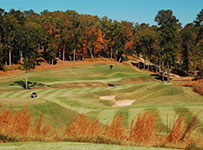
|
||||||||||||

|
||||||||||||
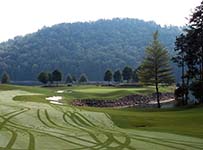
|
||||||||||||

|
||||||||||||
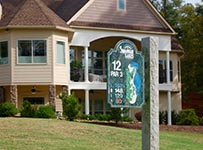
|
||||||||||||

|
||||||||||||

|
||||||||||||

|
||||||||||||
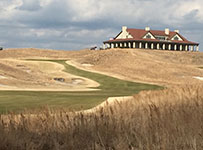
|
||||||||||||||||||||||||||||||||||||||||||

|
||||||||||||||||||||||||||||||||||||||||||
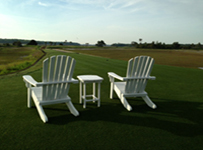
|
||||||||||||

|
||||||||||||
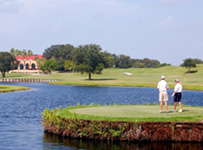
Florida research trip planned in FebruaryI have a love hate relationship with Florida. My parents maintained a modest winter home in Lauderdale Lakes for most of the last two decades of their lives, and my lasting impressions of visits to see them were of waiting in stop and go traffic and of watching them, and the people in their high-density condo neighborhood, appearing to bide their time by the pool and in their homes, waiting for something to happen. Maybe it was the thought of the traffic that kept them on site; maybe not. But the notion of “God’s Waiting Room” did not seem too farfetched. But then a few years ago I spent a day at Lakewood Ranch in Bradenton, a sprawling community with a few nice golf courses and a town center that is a magnet for local residents, some of whom can walk from their homes to the district’s restaurants and shops. And I drove through downtown Sarasota one evening and was impressed with the vibrant crowds spilling out of bars and restaurants. I already knew about the world-class museums in Sarasota and the highly rated Gulf of Mexico beaches just a few miles away…and of Longboat Key, with its own golf courses on a thin strip of land that stretches along the Gulf. I had a great meal at an outdoor Colombian café in St. Armand’s, where locals go for boutique shopping and people watching. No one seemed to be “waiting” for anything in the Sarasota area. I will be spending five days in February researching golf communities in one general area of Florida (and looking in on a Spring Training baseball camp or two.) I haven’t chosen the area but would be happy to take recommendations. My only stipulation is that the area be within about two hours of Orlando or Tampa, because I will be starting my journey in Clermont, FL, just outside Orlando, and ending it in Tampa. The less driving the better. If you have been contemplating a move to Florida and want a second opinion about a specific golf community or area of the Sunshine State, please let me know at
|
The Case for Buying Your Golf Home NOWThere are no safe investments, except maybe a certificate of deposit (CD). The latest yield on a one-year CD is barely above 1% according to Bankrate.com. Want to take the longer view and generate a greater interest rate with a five-year CD? That will get you a tick above 2% annually –- yet you won’t be able to touch your money without penalty for the five years. As I write this, those paltry returns actually look pretty good against the latest stock market performance. The Dow Jones Industrials average, which looked solid in the high 17,000s before the new year, has now dropped hundreds of points in two weeks. China's financial woes and low world oil prices are the major culprits. The uncertainties in the Middle East don't help either, although when in our lifetimes has the Middle East been anything but uncertain? Many business experts are predicting a mediocre stock market at best in 2016. The stock market is about as predictable as world affairs; in other words, it is impossible to say with any degree of certainty what the market will do. And yet, our savings plans (IRAs, 401Ks, etc.) and other personal portfolios, many of them loaded with stocks, are where we go for financial security. Lately, they look anything but secure. But one decent alternate investment for the longer term could be real estate, especially the kind you will actually use; even if the home you buy in a high-quality golf community doesn’t eventually pay off in appreciation, at least you will have enjoyed a nice roof over your head and a nice golf course nearby. There may be no better time to buy a golf community home than in the next couple of years; conversely, there may be no worse time to wait. That's because from all reports, prices are rising in high-quality, stable golf communities of the South; inventories are shrinking as developers are slow to build new communities and new homes; and the migration to the South is in full swing again -- from international locations as well as from the cold North. Demand is outstripping supply, at least for the moment, and that reality is predictive of higher prices in 2016 and beyond, barring any general economic catastrophe. (And if that happens, wouldn't you rather be traipsing through warm weather bunkers outside than hunkered down in indoor cold ones?) In most markets in the North, prices are not expected to appreciate in the coming few years as fast as prices will rise below the Mason-Dixon line. The reasons are clear and simple: More people moving North to South than in the opposite direction could lead to softer prices up north and higher prices down south; that is just simple supply and demand economics. If that contention about migration seems overstated, check out census data and such specific indicators as the United Van Lines annual report on migration, which tracks where people are moving from and to. With the exception of Oregon’s anomalous popularity, the migration patterns are clearly toward the Sun Belt (The Carolinas and Florida especially) and the Northwest. [You can view the United Van Lines report for 2015 by clicking here.] Closing in on July 2006 peak pricesThe latest Standard & Poor/Case-Shiller 20-city home price index confirms that home prices are up in most areas of the nation. The well-respected index rose 5.2% in October, the most recent report available. The modest but steady price increases in most cities of the North and West mean people who have been waiting to be made “whole” in the value of their primary homes can now fetch the price they want and relocate to the lower cost South for their retirements. Mortgage rates are still low, employment rates are up and signs point to further price increases that will eventually bring the Shiller Index even with its all-time peak in July 2006, when it was just 11.5% higher than it is today. In fact, many northerners didn’t wait for this latest price bump in the value of their homes. Between 2014 and 2015, a half million people moved from the "Snow Belt" to the "Sun Belt." That is almost as many as the 600,000 in the record-breaking period of 2004 to 2005. International migration has also increased significantly since the end of the recession, with inflows to the U.S. of more than one million people in 2014, more than 60 percent of them choosing the Sun Belt. With house inventories at normal to below-normal levels in the most popular southern golf communities, prices have steadily inched up as demand has increased. Florida: It’s baaaaaackAmong the southern states, Florida has shown most of the biggest gains. Recall the headlines during the recession about Naples and Miami, for example, where prices dropped 50 percent and more. The Naples market is almost all the way back, and the rest of the state is showing the same sort of rebound. John Burns Real Estate Consulting, which follows the Florida market especially closely, published a recent report that indicated "Retirees and second-home buyers will strengthen the sales velocity in age-restricted and age-targeted communities" in places like Sarasota, Ft. Myers, Orlando, Ft. Lauderdale and Tampa. Burns' researchers also see large parcels of land in Florida becoming "hot" retirement destinations in future years. If developers and their investors are willing to start building on those big parcels, that means they have done the research and determined that the mass migration has legs. The “smart” money should not be ignored. In the meantime, prices, given a shrinking inventory, could rise significantly. People tend to move to places with which they have become familiar. Florida has the good fortune of being a tourist destination, and many of those tourists, assuming a positive vacation experience, often return on a full-time basis. More than one million people visited Sarasota County alone in the fiscal year that ended last July, according to a recent article in Sarasota’s Herald-Tribune; of that number, it is reasonable to assume that a fair percentage later looked at and bought homes in Sarasota, Bradenton, Venice and nearby towns. The most popular markets are showing the biggest rebounds. Naples, for example, has almost completely returned to its lofty pre-recession price levels, enough so that the national builder Taylor Morrison, for example, has developed and opened Esplanade, a luxury golf community in Naples about 20 minutes from the Gulf. In the 12 months ending November 31, the average price for Naples homes that were sold increased 15%, and pending sales increased 20% in the popular $300,000 to $500,000 price range. Prices in another, less pricey Florida market, Vero Beach, were up 12% year over year. Vero has not quite achieved the popularity of the Palm Beaches and other east coast ocean communities further South, and relative bargains in nicely appointed communities like Grand Harbor and Pointe West, which we now feature in our Golf Homes for Sale section at GolfCommunityReviews.com, are still available. For those looking either for a second-home location or a permanent home that features hot summers and warm temperatures the rest of the year, ignore Vero Beach at your own detriment. Golf community homes at less than $100 per foot, land includedFlorida may get the headlines for its comeback and price appreciations, but communities north of the Sunshine State have seen similar increases. In the notoriously slow sales month of November at Savannah Lakes Village in rural McCormick, SC, for example, only four homes were sold, but it brought the total for the year to 64 compared with 51 sales in 2014 and against just nine homes sold in all of 2010. More significantly, the average sale price for homes on Lake Thurmond increased from $338,000 in 2014 to $374,000, a 10% jump, and those with "interior" views, mostly wooded, increased almost 6% from $140,000 to $148,000. (Oddly, golf view homes dropped in price by 10% to an average $211,000, but given the statistically modest number of homes sold in the golf-view category, that could be an anomaly.) As overall demand increases in southern golf communities, those looking for more house at sharper prices are taking more notice of bargain-priced communities like Savannah Lakes, where home prices average barely above $100 per square foot, land included, and homeowner fees are ridiculously inexpensive ($100 per month dues for access to all amenities). The two golf courses, one a classic layout and the other featuring dramatic changes in elevation, are quite fine as well. Water view homes at surprising pricesRemotely located golf communities are not for every couple’s taste, but those who crave a water view home at prices below $500,000 will find them only at some remove from towns with an ample range of services. Besides Savannah Lakes, where a 3 bedroom, 2 bath home of 1,700 square feet at lake front is currently listed for just $189,900, other communities in the Carolinas feature water view homes at surprising prices as long as the buyer is willing to drive a few extra minutes to a supermarket and other conveniences (in some cases, more than “a few” extra minutes). At Keowee Key, 20 minutes from Clemson, SC, a 2 bedroom, 2 bath, lake-facing condo of 2,000 square feet is priced at $140,000, or just $70 per square foot. In the community of Cypress Landing, a bit more “connected” to civilization near Greenville, NC, a few homes on the expansive Chocowinity Bay are available, including a 4 bed, 3 bath beauty with 20 x 20 deck to maximize the views; the 2,683 square foot house is listed for $389,900. In the upstate area of South Carolina, at the unique golf community of Grand Harbor, the Canoe Bay section offers a selection of 3-bedroom townhomes up to 2,700 square feet and priced from $324,000. The “unique” part is the golf course, where designer Davis Love III has placed replicas of the ruins of a destroyed Revolutionary War fortress reminiscent of the one at a nearby historic site. Even a few upscale communities are offering water view homes at prices we don’t think will last. For example, the owners of Reynolds Lake Oconee (formerly Reynolds Plantation), Metropolitan Life Insurance Company, have not gone overboard with marketing the community they rescued from bankruptcy five years ago; that may be the reason for some bargain-priced homes remaining available. We noted one single-family waterfront home recently went under contract; it had been listed at $439,000 with 5 bedrooms and 2 ½ baths at 2,432 square feet and a walkway down the wharf dock at lakeside. That might not seem like a bargain if you haven’t visited Reynolds, but its six golf courses and other amenities, and lake-adjacent setting, are decidedly upscale. Bottom Line is the Bottom LineWith prices rising steadily in many southeast golf communities, and the financial pundits predicting a rocky 2016 for the stock market, this just might be a good time to realize your dream of a golf home in a warm climate –- or, conversely, a bad time to wait. For those who need a little extra convincing, please see the adjacent sidebar for some comparisons of average real estate costs and overall annual expenses (cost of living) in some southern towns compared with towns in the North and West. For additional comparisons, contact me or use the cost comparison calculator at BestPlaces.net. For more information on any golf communities in the Southeast, please contact me.
Larry Gavrich Founder & Editor
|
|
Read my Blog |
|
|
||||||||||||||||||||||||||||||||||||||||||||||

Florida research trip planned in FebruaryI have a love hate relationship with Florida. My parents maintained a modest winter home in Lauderdale Lakes for most of the last two decades of their lives, and my lasting impressions of visits to see them were of waiting in stop and go traffic and of watching them, and the people in their high-density condo neighborhood, appearing to bide their time by the pool and in their homes, waiting for something to happen. Maybe it was the thought of the traffic that kept them on site; maybe not. But the notion of “God’s Waiting Room” did not seem too farfetched. But then a few years ago I spent a day at Lakewood Ranch in Bradenton, a sprawling community with a few nice golf courses and a town center that is a magnet for local residents, some of whom can walk from their homes to the district’s restaurants and shops. And I drove through downtown Sarasota one evening and was impressed with the vibrant crowds spilling out of bars and restaurants. I already knew about the world-class museums in Sarasota and the highly rated Gulf of Mexico beaches just a few miles away…and of Longboat Key, with its own golf courses on a thin strip of land that stretches along the Gulf. I had a great meal at an outdoor Colombian café in St. Armand’s, where locals go for boutique shopping and people watching. No one seemed to be “waiting” for anything in the Sarasota area. I will be spending five days in February researching golf communities in one general area of Florida (and looking in on a Spring Training baseball camp or two.) I haven’t chosen the area but would be happy to take recommendations. My only stipulation is that the area be within about two hours of Orlando or Tampa, because I will be starting my journey in Clermont, FL, just outside Orlando, and ending it in Tampa. The less driving the better. If you have been contemplating a move to Florida and want a second opinion about a specific golf community or area of the Sunshine State, please let me know at
|
The Case for Buying Your Golf Home NOWThere are no safe investments, except maybe a certificate of deposit (CD). The latest yield on a one-year CD is barely above 1% according to Bankrate.com. Want to take the longer view and generate a greater interest rate with a five-year CD? That will get you a tick above 2% annually –- yet you won’t be able to touch your money without penalty for the five years. As I write this, those paltry returns actually look pretty good against the latest stock market performance. The Dow Jones Industrials average, which looked solid in the high 17,000s before the new year, has now dropped hundreds of points in two weeks. China's financial woes and low world oil prices are the major culprits. The uncertainties in the Middle East don't help either, although when in our lifetimes has the Middle East been anything but uncertain? Many business experts are predicting a mediocre stock market at best in 2016. The stock market is about as predictable as world affairs; in other words, it is impossible to say with any degree of certainty what the market will do. And yet, our savings plans (IRAs, 401Ks, etc.) and other personal portfolios, many of them loaded with stocks, are where we go for financial security. Lately, they look anything but secure. But one decent alternate investment for the longer term could be real estate, especially the kind you will actually use; even if the home you buy in a high-quality golf community doesn’t eventually pay off in appreciation, at least you will have enjoyed a nice roof over your head and a nice golf course nearby. There may be no better time to buy a golf community home than in the next couple of years; conversely, there may be no worse time to wait. That's because from all reports, prices are rising in high-quality, stable golf communities of the South; inventories are shrinking as developers are slow to build new communities and new homes; and the migration to the South is in full swing again -- from international locations as well as from the cold North. Demand is outstripping supply, at least for the moment, and that reality is predictive of higher prices in 2016 and beyond, barring any general economic catastrophe. (And if that happens, wouldn't you rather be traipsing through warm weather bunkers outside than hunkered down in indoor cold ones?) In most markets in the North, prices are not expected to appreciate in the coming few years as fast as prices will rise below the Mason-Dixon line. The reasons are clear and simple: More people moving North to South than in the opposite direction could lead to softer prices up north and higher prices down south; that is just simple supply and demand economics. If that contention about migration seems overstated, check out census data and such specific indicators as the United Van Lines annual report on migration, which tracks where people are moving from and to. With the exception of Oregon’s anomalous popularity, the migration patterns are clearly toward the Sun Belt (The Carolinas and Florida especially) and the Northwest. [You can view the United Van Lines report for 2015 by clicking here.] Closing in on July 2006 peak pricesThe latest Standard & Poor/Case-Shiller 20-city home price index confirms that home prices are up in most areas of the nation. The well-respected index rose 5.2% in October, the most recent report available. The modest but steady price increases in most cities of the North and West mean people who have been waiting to be made “whole” in the value of their primary homes can now fetch the price they want and relocate to the lower cost South for their retirements. Mortgage rates are still low, employment rates are up and signs point to further price increases that will eventually bring the Shiller Index even with its all-time peak in July 2006, when it was just 11.5% higher than it is today. In fact, many northerners didn’t wait for this latest price bump in the value of their homes. Between 2014 and 2015, a half million people moved from the "Snow Belt" to the "Sun Belt." That is almost as many as the 600,000 in the record-breaking period of 2004 to 2005. International migration has also increased significantly since the end of the recession, with inflows to the U.S. of more than one million people in 2014, more than 60 percent of them choosing the Sun Belt. With house inventories at normal to below-normal levels in the most popular southern golf communities, prices have steadily inched up as demand has increased. Florida: It’s baaaaaackAmong the southern states, Florida has shown most of the biggest gains. Recall the headlines during the recession about Naples and Miami, for example, where prices dropped 50 percent and more. The Naples market is almost all the way back, and the rest of the state is showing the same sort of rebound. John Burns Real Estate Consulting, which follows the Florida market especially closely, published a recent report that indicated "Retirees and second-home buyers will strengthen the sales velocity in age-restricted and age-targeted communities" in places like Sarasota, Ft. Myers, Orlando, Ft. Lauderdale and Tampa. Burns' researchers also see large parcels of land in Florida becoming "hot" retirement destinations in future years. If developers and their investors are willing to start building on those big parcels, that means they have done the research and determined that the mass migration has legs. The “smart” money should not be ignored. In the meantime, prices, given a shrinking inventory, could rise significantly. People tend to move to places with which they have become familiar. Florida has the good fortune of being a tourist destination, and many of those tourists, assuming a positive vacation experience, often return on a full-time basis. More than one million people visited Sarasota County alone in the fiscal year that ended last July, according to a recent article in Sarasota’s Herald-Tribune; of that number, it is reasonable to assume that a fair percentage later looked at and bought homes in Sarasota, Bradenton, Venice and nearby towns. The most popular markets are showing the biggest rebounds. Naples, for example, has almost completely returned to its lofty pre-recession price levels, enough so that the national builder Taylor Morrison, for example, has developed and opened Esplanade, a luxury golf community in Naples about 20 minutes from the Gulf. In the 12 months ending November 31, the average price for Naples homes that were sold increased 15%, and pending sales increased 20% in the popular $300,000 to $500,000 price range. Prices in another, less pricey Florida market, Vero Beach, were up 12% year over year. Vero has not quite achieved the popularity of the Palm Beaches and other east coast ocean communities further South, and relative bargains in nicely appointed communities like Grand Harbor and Pointe West, which we now feature in our Golf Homes for Sale section at GolfCommunityReviews.com, are still available. For those looking either for a second-home location or a permanent home that features hot summers and warm temperatures the rest of the year, ignore Vero Beach at your own detriment. Golf community homes at less than $100 per foot, land includedFlorida may get the headlines for its comeback and price appreciations, but communities north of the Sunshine State have seen similar increases. In the notoriously slow sales month of November at Savannah Lakes Village in rural McCormick, SC, for example, only four homes were sold, but it brought the total for the year to 64 compared with 51 sales in 2014 and against just nine homes sold in all of 2010. More significantly, the average sale price for homes on Lake Thurmond increased from $338,000 in 2014 to $374,000, a 10% jump, and those with "interior" views, mostly wooded, increased almost 6% from $140,000 to $148,000. (Oddly, golf view homes dropped in price by 10% to an average $211,000, but given the statistically modest number of homes sold in the golf-view category, that could be an anomaly.) As overall demand increases in southern golf communities, those looking for more house at sharper prices are taking more notice of bargain-priced communities like Savannah Lakes, where home prices average barely above $100 per square foot, land included, and homeowner fees are ridiculously inexpensive ($100 per month dues for access to all amenities). The two golf courses, one a classic layout and the other featuring dramatic changes in elevation, are quite fine as well. Water view homes at surprising pricesRemotely located golf communities are not for every couple’s taste, but those who crave a water view home at prices below $500,000 will find them only at some remove from towns with an ample range of services. Besides Savannah Lakes, where a 3 bedroom, 2 bath home of 1,700 square feet at lake front is currently listed for just $189,900, other communities in the Carolinas feature water view homes at surprising prices as long as the buyer is willing to drive a few extra minutes to a supermarket and other conveniences (in some cases, more than “a few” extra minutes). At Keowee Key, 20 minutes from Clemson, SC, a 2 bedroom, 2 bath, lake-facing condo of 2,000 square feet is priced at $140,000, or just $70 per square foot. In the community of Cypress Landing, a bit more “connected” to civilization near Greenville, NC, a few homes on the expansive Chocowinity Bay are available, including a 4 bed, 3 bath beauty with 20 x 20 deck to maximize the views; the 2,683 square foot house is listed for $389,900. In the upstate area of South Carolina, at the unique golf community of Grand Harbor, the Canoe Bay section offers a selection of 3-bedroom townhomes up to 2,700 square feet and priced from $324,000. The “unique” part is the golf course, where designer Davis Love III has placed replicas of the ruins of a destroyed Revolutionary War fortress reminiscent of the one at a nearby historic site. Even a few upscale communities are offering water view homes at prices we don’t think will last. For example, the owners of Reynolds Lake Oconee (formerly Reynolds Plantation), Metropolitan Life Insurance Company, have not gone overboard with marketing the community they rescued from bankruptcy five years ago; that may be the reason for some bargain-priced homes remaining available. We noted one single-family waterfront home recently went under contract; it had been listed at $439,000 with 5 bedrooms and 2 ½ baths at 2,432 square feet and a walkway down the wharf dock at lakeside. That might not seem like a bargain if you haven’t visited Reynolds, but its six golf courses and other amenities, and lake-adjacent setting, are decidedly upscale. Bottom Line is the Bottom LineWith prices rising steadily in many southeast golf communities, and the financial pundits predicting a rocky 2016 for the stock market, this just might be a good time to realize your dream of a golf home in a warm climate –- or, conversely, a bad time to wait. For those who need a little extra convincing, please see the adjacent sidebar for some comparisons of average real estate costs and overall annual expenses (cost of living) in some southern towns compared with towns in the North and West. For additional comparisons, contact me or use the cost comparison calculator at BestPlaces.net. For more information on any golf communities in the Southeast, please contact me.
Larry Gavrich Founder & Editor
|
|
Read my Blog |
|
|
||||||||||||||||||||||||||||||||||||||||||||||